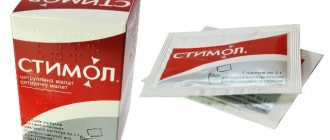Let's say your squat maximum is 100 kg. What is more effective for growing your muscles - squatting all the way with a 30-kilogram barbell or with an 80-kilogram barbell? Don’t rush to give your answer, scientists checked everything a long time ago.
Well-known fitness expert Sergei Strukov collected and translated into Russian text based on 68 scientific studies that attempt to answer the question “Is there a minimum intensity threshold for stimulating adaptive hypertrophy during resistance training.” We have adapted an important and interesting original of almost 35 thousand characters for your eyes: we have shortened and simplified the text for mass understanding without losing the meaning, so let’s dive into the search for the answer without delay.
60-75% of the repetition maximum gives the best effect
In the traditional approach to training, to significantly increase muscle size requires an intensity level of about 60% of your maximum, which you can do only once (which corresponds to about 10-12 repetitions). Presumably this is the minimum level required to activate the full range of muscle fibers.
During the study (link #1 below the text), the effect of training intensity on a wide range of loads was determined: from 20% to 90% of the maximum working weight of the subjects.
At a load intensity of 20% they performed 3 sets of 27 repetitions, at 40% - 3 sets of 14 repetitions, at 60% - 3 sets of 9 repetitions, at 75% - 3 sets of 8 repetitions and at 90% - 6 sets of 3 reps. Thus, the total amount of work (total amount of weight lifted) was the same in all five cases.
As a result, the increase in muscle protein synthesis was minimal after exercise at 20% and 40% intensities, but increased significantly at 60% and reached a plateau. In other words, with a further increase in the load as a percentage of the maximum weight that the subjects could take, there was no significant increase in muscle protein synthesis.
The results were consistent across both young and older adults, confirming that the stimulating effects of exercise peak at ~60-75% of maximum body weight.
Training large muscles together with small ones
Small muscle groups need to be trained together with large ones. This way, greater progress will be achieved.
This misconception was based on a previously existing theory about the connection between changes in the levels of anabolic hormones in response to physical activity and subsequent progress. Since training large muscle groups caused large hormonal changes, it was hypothesized that training small muscle groups in isolation from large muscle groups was ineffective due to little hormonal stimulation. Therefore, it is better to combine them in one workout so that the small muscles are exposed to more hormones circulating in the blood. This theory has never been confirmed and has been refuted by many studies. No connection has been established between hormonal changes during exercise and subsequent muscle growth. Large and small muscle groups progress well, both with joint and separate training. The main criterion for muscle growth is adequate physical activity and subsequent recovery, and not short-term surges of endogenous hormones.
Low intensity is effective if you work to failure
However, there is emerging evidence that low-intensity resistance training (even at 30% of your maximum weight) can produce significant muscle growth, in many cases as much as high-intensity exercise.
The authors of the previous study did not note whether low-intensity exercise (20-40%) was performed to failure, this was not the goal, but this is a very important limitation since hypertrophy (muscle growth) has been experimentally shown to occur in response to low-intensity training. , if repetitions are performed to the point of voluntary muscle failure (studies #2, #3).
In Study #2, 15 young, active people performed four sets of single-leg calf extensions, first at 30%, then at 90% of their rep max until voluntary muscle fatigue each.
The third time, the exercise was performed at an intensity of 30% with work (repetitions times the load) equal to a load of 90% (roughly speaking, with a load of 30% they did 3 times more repetitions than with a load of 90% of the repetition maximum. As a result, the number fewer repetitions were obtained than when performed with the same load, but “all the way”).
4 hours after completing each of these three exercises, muscle protein synthesis was elevated, but levels in the third exercise (30% exercise with 3 times the 90% repetition rate, but not all the way down) were approximately half that amount. lower than after the first two loads. In other words, the decisive factor in this experiment was the fact that the exercises were performed with low weights until muscle fatigue, “all the way.”
It is noteworthy that the synthesis of muscle proteins myofibrils (muscle fibers) remained elevated 24 hours after exercise only at a load of 30% of the maximum weight, but with the number of repetitions to failure.
As a conclusion, exercise performed at low intensity to failure produces a greater immediate muscle response compared to exercise at high intensity. However, it should be noted that the amount of work was significantly higher when performing a 30% load to failure compared to a 90% load. Roughly speaking, with a load of 90% of the one-time maximum, the subjects could do, for example, only 3 repetitions, and with a load of 30% “all the way” - much more than 9 repetitions. This fact does not allow us to isolate the effect of intensity in this study.
Alternative opinion
On the other hand, people who are in love with sports, as a rule, do not have bad habits, lead a healthy lifestyle, and monitor their diet.
All these factors have a very positive effect on growth. Some bodybuilders specifically perform various exercises that stimulate growth. Such exercises include various types of spinal stretching, jogging and swimming. An important factor is the consumption of increased amounts of vitamins and minerals.
There are many examples of famous bodybuilders increasing their height during years of intense training. And among the famous bodybuilders there are also tall representatives - Lou Ferrigno, Arnold Schwarzenegger, David Robinson.
The results are contradictory. More reps = less muscle
In Study #4, 32 untrained young people from 17 to 28 years old were randomly divided into 3 groups: - for one group, the weights in the exercises were selected so that they performed 3-5 repetitions “all the way”, four sets of each exercise with rest between sets 3 minutes; – the second group performed three sets of 9–11 reps and rested for 2 minutes between sets; – the third group – performed two sets of 20–28 repetitions and rested for 1 minute. Well, the control group - for comparison, did not perform any exercises with weights at all.
The workout included leg presses, squats and calf extensions with approximately equal total workload. Classes were held 2 times a week for the first 4 weeks and 3 times a week for the remaining 4 weeks. The weight was progressively increased, focusing on performing the required number of repetitions in all approaches, and all approaches were performed until concentric muscle failure.
As a result, the cross-sectional area of the muscle was assessed (on which its strength and volume directly depend). A biopsy of the vastus lateralis muscle was used for evaluation.
After 8 weeks, the low and moderate repetition groups showed significant increases in type I, IIA, and IIX fiber cross-sectional area of 12.5%, 19.5%, and 26%, respectively. But the increase in fibers in the high-repetition (and therefore low-intensity) group did not reach statistical significance for any fiber type, which means low-intensity exercises (20-28 reps to the max) are not suitable for stimulating hypertrophy.
Metabolic stimulus
Do you know that burning sensation in your muscles after a high-rep set? Have you ever wondered why this happens? If not, then I suggest you look into it.
Everything is quite simple - during prolonged work with external resistance, a significant depletion of muscle energy reserves occurs with the accumulation of lactic acid and hydrogen ions in the sarcoplasm. These breakdown products irritate the nerve endings, and we feel a burning sensation. The accumulation of lactic acid only occurs under anaerobic conditions - that is, when you perform long work. For example, you do high rep bench presses or swim fast.
And why do we need all this, because the burning sensation is so unpleasant? We will not delve into the intricacies of the processes; all we need to know is that the accumulation of metabolites is another stimulus that activates the growth of muscle mass. There are several conditions that must be met in order for a metabolic stimulus to occur.
Three conditions
- In no case should the weight be higher than 60% of 1RM! It is extremely important that the time the muscle is under load is at least 45 seconds. As you understand, this is impossible to do with heavy weights. Therefore, we take small weights and perform 15-20 slow repetitions with them. I recommend using a stopwatch instead of repetitions.
- Shortened amplitude. We need to block the blood flow and create conditions of hypoxia. This is best dealt with by working “within the amplitude” - that is, we should not completely straighten the limbs at the extreme points.
- A short rest. You should not rest more than one minute between sets.
Schematically, metabolic leg training will look like this:
| Exercise | Approaches | Repetitions | Duration of rest, min |
| Leg press | 4 | 15 | 1 |
| Lying leg curls | 4 | 20 | 1 |
| Seated leg extensions | 2-3 | 20 | 1 |
| Leg curls in the simulator | 2-3 | 20 | 1 |
| Standing calf raises | 5 | 20-30 | 1 |
After such a workout, you will also experience pain for several days. The fact is that muscle fibers will undergo chemical destruction. Plus, the energy reserves in the muscles will be depleted.
In my opinion, the most perfect tool for metabolic stimulation is the method of static-dynamic exercises. We can see it in my other article.
The number of repetitions is not important if they are done to failure
Other scientists have used a similar basic training program (Study #5). 25 healthy people aged 34-44 years with at least 1 year of resistance training experience were divided into only 2 groups: low and high repetitions, the group with medium repetitions was excluded.
Ultimately, after 8 weeks of training, a 10% increase in quadriceps femoris cross-sectional area was found in both groups, with no significant differences.
A follow-up study from the same laboratory (#6) with a similar sample of subjects reported a 10% increase in quadriceps muscle size, with no significant differences between groups that used a similar training protocol.
The researchers believe that the results differ from the data we described in the previous example due to the lack of training of older people, as a result of which any type of resistance training in this population can provide a significant stimulus for muscle growth.
Notably, subsequent studies using a similar protocol in healthy young adults showed an 18% increase in satellite cell numbers associated with low-intensity (higher repetition) training. Therefore, exercises with light weights and high repetitions, done to the limit, can have a positive effect on the early stages of the muscle tissue formation process.
A little philosophy
What is training? It doesn’t matter what it is - whether it’s lifting a heavy barbell, jumping, running or swimming. Essentially, it's just an incentive . An incentive to further develop certain qualities and skills. Accordingly, a series of workouts is just a set of stimuli that force the body to react to them in one way or another.
By lifting the barbell in different ways, we stimulate our muscles, but the impact still varies. Agree, you can lift the barbell quickly or slowly, in full amplitude or shortened, with large or small weight. Most gym goers don't even think about all this. At least in the first six months of classes. After some time, beginners begin to think about the weight of the weights and the number of repetitions, but only a small part of them delve into the physiology of the body.
Three sets of light weights are more effective than one set of heavy weights.
Stuart Phillips's lab conducted an experiment with similar test subjects to test the long-term muscle gain hypothesis (#7). 18 untrained people aged 20-22 years were randomly assigned to groups that did different resistance training, including single-leg calf extensions to the limit: - one group did three sets of low-intensity exercises at 30% of their one-repetition maximum; – second – three sets of high-intensity exercises 80% of the maximum; - third - only one approach with 80% RM. Classes were conducted 3 times a week for 10 weeks.
At the end of the study, in the first two groups - both low and high intensity - there were significant increases in muscle volume (in the first on average +6.8%, in the second +7.2%).
And in the third group, which performed only one approach, only a slight increase in muscle was recorded, less than half of the result of the previous groups: 3.2%. This means that low-impact exercises performed in three sets to muscle failure are more effective than exercises with a weight close to the maximum, but in one set.
This means that at your “maximum” squat of 100 kg, if you squat with a 30 kg barbell all the way to the stop, the effect on muscle growth is approximately equivalent to squats with an 80 kg barbell.
What is “time under load”?
As the name suggests, Time Under Tension (TUT) is the amount of time a set is performed.
So, instead of aiming to complete, say, 8 reps per set, you can perform a set for, say, 50 seconds. Once the 50 seconds are up, the set stops, no matter how many reps you did.
Example of a VPN for squats
4 – 1 – 1 – 0 for one repetition where you squat 4 seconds is the first number , a second pause at the bottom of the amplitude is the second number , one second to stand up is the third number , and then the fourth number is 0, which means that at the top point you don't stop. Thus, you spent 6 seconds on one repetition. If you maintain this tempo for eight reps, the entire set will take 48 seconds.
In general, a time under load of 1 to 20 seconds is considered ideal for increasing strength, 30-60 seconds for hypertrophy, and 70-100 or more seconds for developing endurance (although these are just approximate figures, specific recommendations from various experts may vary slightly). vary).
But is “time under tension” an important factor in muscle growth? Should you stop counting reps per set and start timing yourself?
The short answer is: yes, the total amount of time your muscles spend under tension certainly plays a role in achieving optimal hypertrophy results, but it's not really something you should worry about.
Ultimately, any recommendations regarding time under load are based solely on anecdotal evidence and personal opinion, rather than data from specific, well-controlled studies.
The concept of VPN certainly makes sense, but this does not mean that anyone knows for certain the optimal time frame for performing sets to achieve a specific training goal.
What “time under load” tells us is what most people who train with weights already know:
- Very short sets of low reps (less than 5) are likely not ideal for hypertrophy and are more suitable for increasing strength.
- Very long sets of high reps (more than 12) are also probably not ideal for muscle growth and are more suitable for developing endurance.
This is why, to achieve maximum results in terms of increasing muscle mass, it is often recommended to perform between 5 and 12 repetitions per set.
As long as you stick to this range and perform your reps in such a way that lifting the weight is a quick but non-snatching movement and lowering the weight is slow and under your full control, there is no need to worry about any specific time frame.
In any case, you will most likely “fall” into the typical recommended range of hypertrophy for hypertrophy, and even if you “miss” by a few seconds, do not forget that this is, in any case, an approximate time frame.
conclusions
Research suggests that a moderate repetition range (6-12 reps) using a controlled tempo of lifting the weight may be optimal for maximizing muscle growth. This so-called “hypertrophy range” may provide the optimal combination of mechanical tension, metabolic stress, and muscle damage, thereby generating sustained muscle growth.
However, there are good reasons for including loads of varying intensity in training programs to increase muscle mass. Low repetition training (1-5) improves the neuromuscular adaptations needed to develop maximum strength. This adaptation allows the use of greater weights, and thus greater mechanical stress at moderate intensity.
Conversely, high-repetition training (greater than 15) can reduce lactate production during exercise, delaying the onset of fatigue and thereby leading to greater changes in muscle fibers.
This variable approach is especially important for people with significant training experience, when a higher level of overload is needed to continue adaptive changes.
There is also evidence that low-intensity, high-repetition training can increase muscle mass in untrained individuals. Low-load training to failure seems to be the optimal solution for increasing muscle mass in beginners. It may also be useful for older adults or those who are unable to perform near-maximal weight training exercises.
Source: fitness-pro.ru
Author: Sergey Strukov
Links to studies mentioned in the text:
#1. Kumar V, Selby A, Rankin D, Patel R, Atherton P, Hildebrandt W, et al. Age-related differences in the dose-response relationship of muscle protein synthesis to resistance exercise in young and old men. J Physiol. 2009;587(Pt 1):211–7. CrossRef
#2. Burd NA, West DW, Staples AW, Atherton PJ, Baker JM, Moore DR, et al. Low-load high volume resistance exercise stimulates muscle protein synthesis more than high-load low volume resistance exercise in young men. PLoS One. 2010;5(8):e12033. CrossRef
#3. Tanimoto M, Ishii N. Effects of low-intensity resistance exercise with slow movement and tonic force generation on muscular function in young men. J Appl Physiol. 2006;100(4):1150–7. CrossRef
#4. Campos GER, Luecke TJ, Wendeln HK, et al. Muscular adaptations in response to three different resistance-training regimens: specificity of repetition maximum training zones. Eur J Appl Physiol. 2002;88(1–2):50–60.
#5. Leger B, Cartoni R, Praz M, Lamon S, Deriaz O, Crettenand A, et al. Akt signaling through GSK-3beta, mTOR and Foxo1 is involved in human skeletal muscle hypertrophy and atrophy. J Physiol. 2006;576(Pt 3):923–33. CrossRef
#6. Lamon S, Wallace MA, Leger B, Russell AP. Regulation of STARS and its downstream targets suggest a novel pathway involved in human skeletal muscle hypertrophy and atrophy. J Physiol. 2009;587(Pt 8):1795–803. CrossRef
#7. Mitchell CJ, Churchward-Venne TA, West DW, Burd NA, Breen L, Baker SK, Phillips SM. Resistance exercise load does not determine training-mediated hypertrophic gains in young men. J Appl Physiol. 2012;113(1):71–7.
Basic muscle exercises are more effective than isolation exercises
Basic (multi-joint) exercises are more effective for muscle growth than isolating (single-joint) exercises.
Studies comparing programs consisting of only multi-joint or single-joint exercises do not show a clear advantage in the growth of pleasure muscles or other muscles. And in exercises for the muscles involved in extension of the spine, isolating exercises are even more effective. In fact, speaking about a specific muscle group, its growth depends solely on the quality of the load it receives, and not on whether the synergists and agonists also receive a load on the muscles. And complex work of several muscles at the same time can even negatively affect the development of the main muscles, since due to the anatomical characteristics of the athlete or his motor skills, synergists and agonists can be dominant in the exercise and limit the achievement of failure in the target muscle group. For example, not everyone is able to technically correctly perform basic movements in order to target the middle and rear deltoids or buttocks. And there are no full-fledged multi-joint exercises for the lower leg muscles.
On the other hand, the participation of several muscle groups is the main advantage of basic multi-joint exercises, because allows you to increase the total volume of load on the accompanying muscles, which, as a rule, are also loaded separately. If in a weekly cycle the arms and shoulders are loaded in a separate workout, then they will receive additional load on the day of working with the back and chest. Isolating exercises, in addition to the fact that they “hit” the right place more precisely, can eliminate some of the shortcomings of the basic ones. In complex hip movements (squats, presses, lunges), biarticular muscles such as the rectus femoris and hamstrings receive little load due to their uncoordinated work, accompanied by simultaneous stretching and contraction. They can be fully loaded only by working in one joint (extension, flexion, hyperextension, traction)
Classification
There are several types of on-load tap-changers, differing in the following characteristics:
- a type of current-limiting element - with reactors or resistors;
- presence or absence of a contactor;
- number of phases – single-phase and three-phase;
- type of current switching.
Explanation of marking for on-load tap-changer type UBB...
Depending on the method of current switching, there are the following types of devices:
- the arc breaks in a volume filled with transformer oil - the device involves the use of arc extinguishing contacts that do not require the use of special elements to extinguish the arc;
- the arc breaks in a rarefied space - it is suggested to use vacuum arc extinguishing chambers produced industrially;
- shutdown is carried out using thyristors, in an arcless manner;
- combined methods - with a combination of different types of switching.
Also read: Purpose of dielectric galoshes in electrical installations
To ensure the safety and functionality of the on-load tap-changers, they are equipped with automatic monitoring elements and voltage regulators.
In addition to the above devices, special booster transformers can be used to change the voltage characteristics in powerful units. This equipment is connected in series and used together with the main unit as an auxiliary unit. But this method has not been widely used due to the high cost and high complexity of the circuit.
Stage-by-stage construction and installation work
The process of construction and installation work itself involves rough manipulations, namely laying the main line, installing equipment, testing, etc., which can hinder the start of subsequent work. The next stage is finishing work, such as installation of sensors, drives and other things. Installation work is carried out entirely in accordance with technical regulations, technology and standards. Specialists carry out quality control at every stage and draw up the necessary documentation. At the fourth stage, individual tests are carried out and installed systems are analyzed.
On-load tap-changer protection
To ensure normal operation of the device, gas protection is used. An additional container (expander) is made, connected to the main oil medium of the transformer by a special channel in which a relay and a signal element are installed.
If gas formation is slight, the signal element indicates a decrease in the oil level. In the event of a blowout, the expanded oil is forced into the conservator. If the surge intensity reaches the set value, the relay is activated, turning off the transformer. In this way, the on-load tap-changer contactors are protected from destruction.










